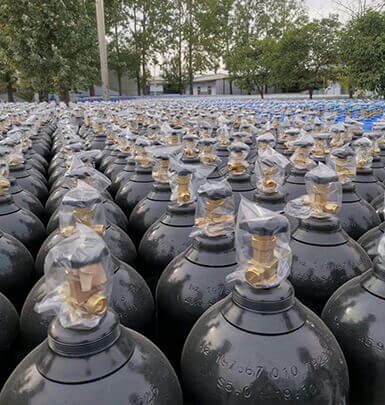When it comes to cooling, two primary options come to mind: dry ice and regular ice. Each of these cooling methods has its unique advantages and applications, but which is better for your specific needs? In this blog, we’ll dive into the differences between dry ice and regular ice, covering aspects such as cooling efficiency, cost, safety, and the ideal scenarios for each. By the end of this article, you will have a clear understanding of which option suits your cooling requirements best.
Understanding the Basics: What is Dry Ice and Regular Ice?
Dry Ice, on the other hand, is frozen carbon dioxide (CO₂) and sublimates (turns directly from solid to gas) at -78.5°C (-109.3°F). Dry ice does not melt like regular ice; it transforms into CO₂ gas without leaving a liquid residue, making it a popular choice for certain industrial and shipping applications. While not as easily accessible as regular ice, dry ice delivers much more intense cooling power.
Cooling Efficiency: Dry Ice Takes the Lead
When you compare the cooling potential, outperforms regular ice by a significant margin. Dry ice can achieve much lower temperatures and lasts longer than regular ice because it sublimates rather than melts. This sublimation process makes perfect for situations where you need a sustained cold environment for a longer period, such as in the transportation of perishable goods.
For example, industries that deal with medical shipments or sensitive food items frequently choose for its superior cooling capabilities. Dry ice can keep products frozen for extended periods, even during long transit times, without the mess of melted water. This benefit makes dry ice the go-to option for shipping frozen items.
Regular Ice, while effective for short-term cooling, begins to melt relatively quickly, leading to water accumulation. This can cause problems in applications where keeping items dry is crucial, such as electronics or paper products. For picnics, casual outdoor events, or keeping beverages cold for a few hours, regular ice works just fine. However, for longer-term needs, dry ice reigns supreme in terms of pure cooling efficiency.
Safety Concerns: Handling Dry Ice Requires Care

While dry delivers superior cooling, it comes with some safety precautions. Dry ice is much colder than regular ice and can cause severe burns if it comes into direct contact with the skin. When handling dry ice, gloves and safety goggles are highly recommended. In addition, because dry ice sublimates into CO₂ gas, it should only be used in well-ventilated areas. CO₂ gas displaces oxygen, and if used in confined spaces, it could create a hazardous environment.
In comparison, poses no significant safety risks. It’s harmless to touch and, if it melts, you’re just left with water. Regular is safe to use in nearly any situation, which makes it the more practical choice for casual, everyday applications.
However, both types of ice can contribute to slips and falls if they melt onto the ground, creating slippery surfaces. Always be mindful of where you place either type of ice during use.
Applications: When to Choose Dry Ice vs. Regular Ice
Dry Ice is the better choice in scenarios where intense cooling is necessary. It excels in industries like food preservation, medical transport, and laboratory settings. Dry ice is also frequently used in stage effects for its ability to create thick fog when exposed to water, making it popular for entertainment purposes. Dry ice’s ability to maintain extremely low temperatures for extended periods makes it a vital tool in shipping perishable or temperature-sensitive items.
On the flip side, Regular Ice is ideal for day-to-day cooling needs. It’s great for picnics, parties, and short-term food preservation. If you’re looking to cool drinks or keep your snacks fresh for a few hours, regular ice is more than sufficient. People also commonly use regular ice in coolers during camping trips and outdoor activities when they don’t need extreme cooling but want to maintain a low temperature for several hours.
Environmental Impact: Dry Ice’s Advantage
When considering the environmental impact, comes out ahead. Since it sublimates directly into CO₂ gas without leaving a liquid residue, it doesn’t contribute to water waste. Industries capture CO₂ from various industrial processes to produce dry ice, preventing this gas from being released into the atmosphere. This practice makes a more eco-friendly option in several ways.
Regular Ice, while less harmful to handle, requires large amounts of water, which can be a concern in areas facing water scarcity. Moreover, the energy needed to freeze water into ice also contributes to a carbon footprint, especially if used in bulk for industrial purposes.
Conclusion: Which is Better for Cooling?
The answer to “Dry Ice vs. Regular Ice: Which is Better for Cooling?” depends on your specific needs. If you need sustained, intense cooling for long periods, dry ice is the superior option. Its ability to reach extremely low temperatures and remain solid longer makes it perfect for shipping perishable items, medical applications, and industrial uses.
However, if you’re looking for a more affordable, accessible, and user-friendly option for short-term cooling, regular ice is the better choice. It’s easily available, poses no safety risks, and works well for everyday scenarios like keeping drinks cold or preserving food for a picnic.
Both and regular have their advantages. If you consider factors like cooling power, cost, safety, and application, you can make an informed decision about which option best suits your cooling needs. Ultimately, ice is the industrial powerhouse, while regular ice is the casual, convenient option for everyday use.













